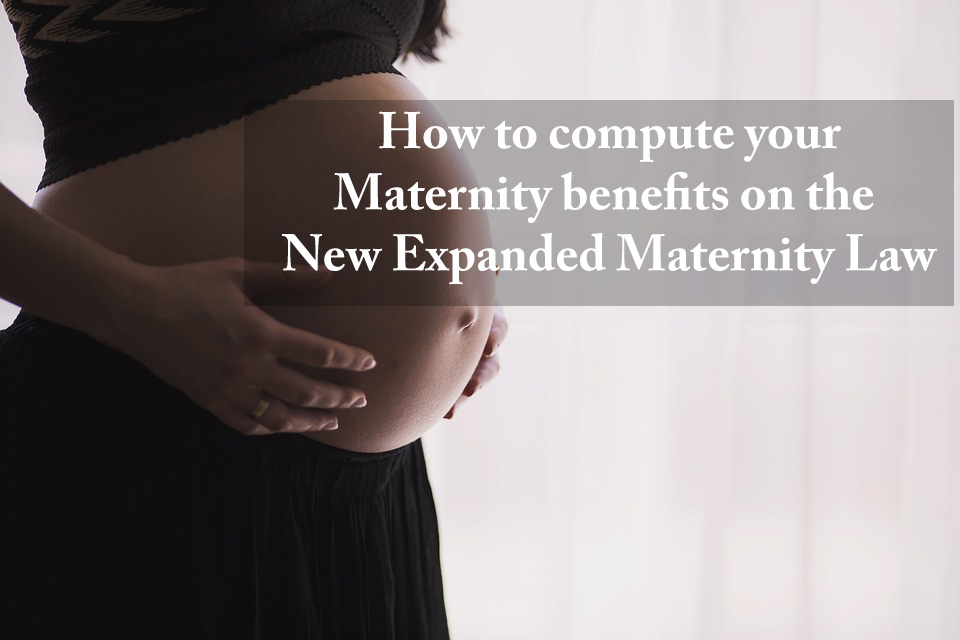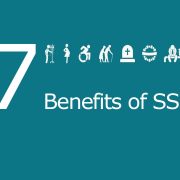Expanded Maternity Leave Law (EML) is now implemented for working moms to receive SSS Maternity Benefits
The 105-Day Expanded Maternity Law Act (EML) or Republic Act. No. 11210 is now implemented as the Implementing Rules and Regulation (IRR) was released last May 1, 2019. This means that working women who have just given birth will be given full benefits of the Act.
Qualified working moms will be granted by EML 105 days of maternity benefits equivalent for every instance of live childbirth, no matter the type of delivery, and regardless of their civil status and legitimacy of the child. From the 105 days, the mother can transfer seven days to the father of the child or to the alternate caregiver.
If one is a qualified solo parent, she is entitled to 15 more days of maternity benefit on top of the 105 days under the Solo Parents’ Welfare Act of 2000 or Republic Act No. 8972. If needed, the EML can also provide the new mothers the option to extend their maternity leave for up to 30 days without pay.
For the instance of miscarriage or emergency termination of pregnancy, EML grants 60 days of paid maternity leave.
This law received good feedback from the pregnant women and female workers however there are still questions regarding the implementation of the law. Below, issues about the law will be discussed.
First, when did the EML Act take effect?
It was signed last February 20, 2019 and became effective after a month on March 11, 2019 which is 15 days from its publication in the Manilla Bulletin on February 23 and 17 days after in the Official Gazette.
The Act is retroactive, meaning even though the IRR was released on May 1, moms who have given birth on March 11 onwards and has already claimed their maternity benefits are still able to receive the remaining amount of the mandated maternity benefit.
Second, who are deemed eligible to receive the EML benefits?
If a woman has given birth on March 11 onwards, she can avail of the new maternity benefits. Women who are working for the government sector or private, professional, and informal sector are covered. Voluntary contributors to the Social Security System (SSS) are eligible as well.
To be eligible to receive the SSS maternity benefit, a similar procedure is followed. Three monthly contributions within 12 months immediately before the semester of her childbirth or miscarriage should have been paid by the female members. Her employer or SSS (for those who are self-employed or voluntary members) should be given notice and proof of her pregnancy which are the SSS Maternity Notification form and a medical certificate and an ultrasound scan.
Moreover, SSS female members who give birth, miscarry, or had an emergency termination of pregnancy will still be granted maternity leave with full pay if they terminated their employment not more than 15 calendar days. If a female member has a pending administrative case in the public or private sector, she is still covered in the law.
Third, what does it mean when one gives birth to twins or have overlapping miscarriages?
If a female worker had multiples (i.e. twins), SSS will pay only one maternity benefit per childbirth or delivery. If the female employee had two miscarriages, maternity benefits for both will be granted by the SSS. Same goes for a miscarriage and subsequent live birth however the amount of maternity benefit that corresponds to the overlapping period will be deducted from the current maternity benefit claim.
Fourth, when can a female employee start her maternity leave?
Maternity leaves can start before or after the pregnant female worker gives birth. However, once she goes on maternity leave, it must be continuous and uninterrupted. As long as the length of the female worker’s leave days do not exceed the total number of days she is entitled to, the female worker can take her maternity leave before giving birth. Live birth would give you 105 days of leave, 120 for solo parents with live births and 60 days for miscarriages and termination of pregnancy. With that, it is required that the number of her post-birth leave be not less than 60 days.
If needed, a new mother can extend her maternity leave for 30 more days but without pay. To do so, she must give her employer a written notice at least 45 days before the leave ends. However, if there is a medical emergency, no prior notice is needed. To receive compensation during the 30-day extra maternity leave, the new mom can opt to use her sick and vacation leaves.
Fifth, how do you compute your SSS maternity benefit?
To compute for how much you can get from your SSS maternity benefit, you can base it on your monthly salary credit (MSC) of your SSS contribution. MSC is basically the compensation base or salary level for your contributions and benefits related to the total earnings for the month. This bracket is used to determine how much you are entitled to when you apply for a loan or a benefit.

To compute for your SSS maternity benefit, follow the steps below:
- Take the top six highest contributions from the 12 months immediate before the semester of the female worker’s childbirth of miscarriage. Add all six and that is your total MSC.
- Divide the total MSC by 180 and that is your average salary credit or your daily maternity allowance.
- To get the total amount, simply multiply it to the number of leave days you are entitled to.
Here is a formula you can use:
*Top Contribution = TC
[(TC 1 + TC 2 + TC 3 + TC 4 + TC 5 + TC 6) /180] x number of maternity leave days
Employers from the private sector are required to pay for the difference between the full salary and the actual cash benefits received from the SSS however private sector employers who only have less than 10 employees may be exempted from paying the salary differential. For those who are self-employed and voluntarily contributes as SSS female members, SSS will pay the full maternity benefits. SSS will do the same to those who have been separated from their employers before giving birth.
Employers are still required to give an advance of the full SSS maternity benefit to its female employees within 30 days from filing their maternity leave application. The employers will be reimbursed only the amount computed based on her average daily credit. For reimbursement, employees are required to submit their SSS Maternity Reimbursement form and all the necessary requirements.
How does one transfer the leave days to the father?
A new mother can allocate some of her leave days (up to 7) to the child’s father, even though they’re not married. It can also be transferred to an alternate caregiver if the caregiver is a relative within the fourth degree of consanguinity or if the caregiver is someone she lives with no matter the gender.
However, SSS will only pay for the new mother’s “non-transferred or un-allocated” maternity leave days. For example, if the mother has 105 leave days and she gives 7 leave days to the father, SSS will only pay for 98 days as explained by Normita Doctor the SSS Benefits Administration Division vice president.
The employer should be notified by the SSS female member if such allocation will happen. The father or the alternate caregiver should also inform his or her employer regardless if it’s a private or public sector company. Unlike the maternity leave, the seven-day leave transferred can be used consecutively or intermittently but it can’t be used when the new mother’s maternity leave period has ended.
If in case that the leave is allocated to the father, Republic Act No. 8187 or the Paternity Leave Act of 1996 takes into place which gives an additional paternity leave benefit on top of the maternity leave. However, the conditions for this is that the male must be a new father and is married to the new mother and lives in the same household as her and their newborn. Moreover, this is not filed with the SSS but instead with the employer of the father as a typical work leave.



